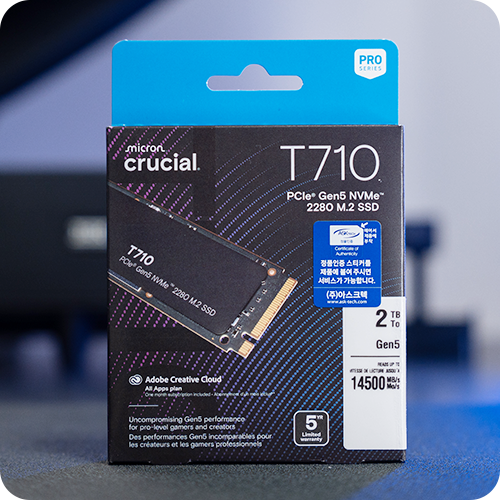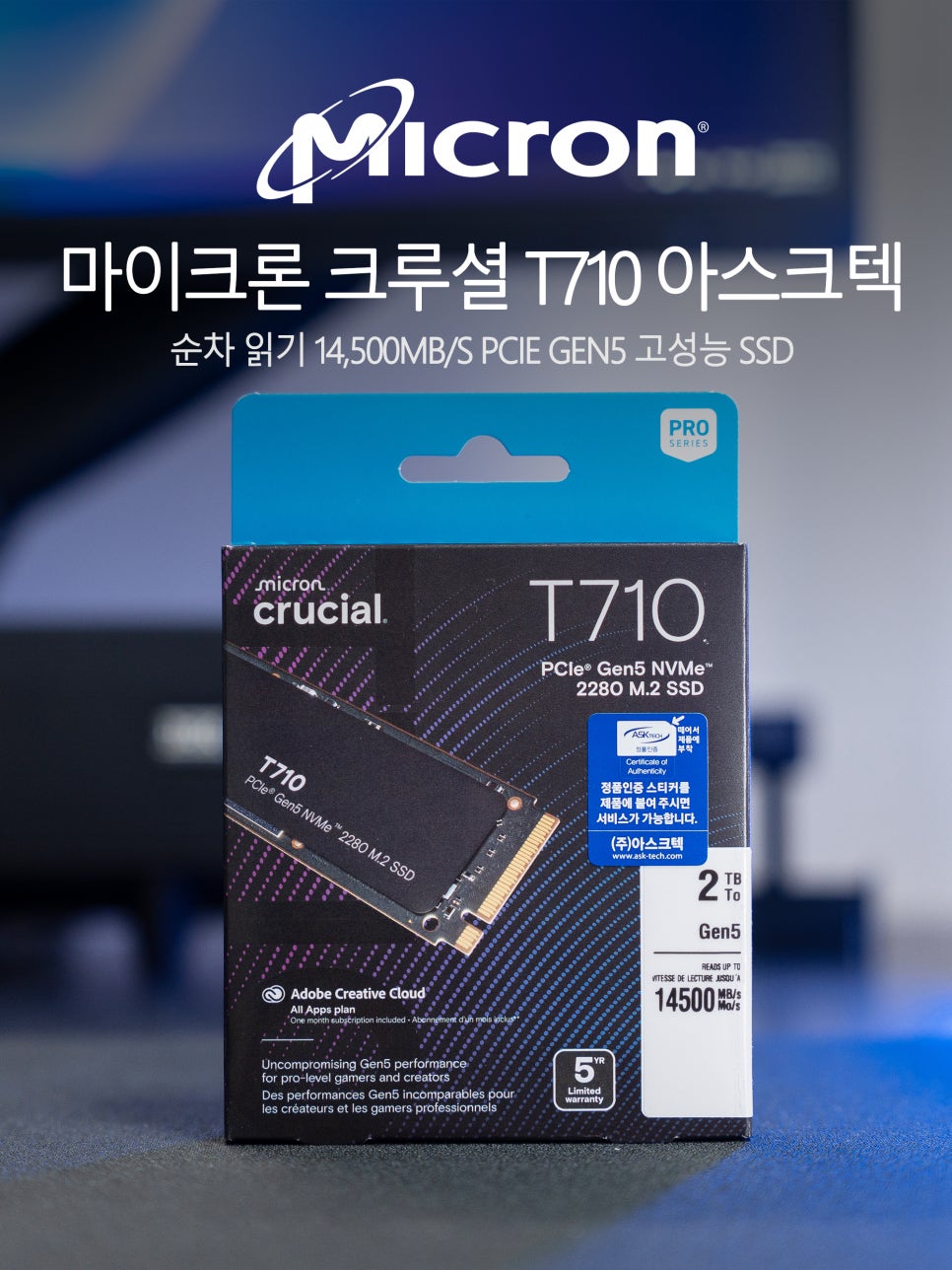
In recent years, one of the most notable technologies in the PC hardware industry has been PCIe 5.0. Offering nearly double the bandwidth compared to the existing PCIe 4.0, the PCIe 5.0 interface has brought about significant performance improvements in sequential read/write speeds. This advantage is particularly pronounced in gaming and professional work environments that require large-scale data processing.
In the storage sector, PCIe 5.0 SSDs are gradually being released, and global memory semiconductor company Micron is introducing a diverse product lineup to popularize PCIe 5.0 SSDs.
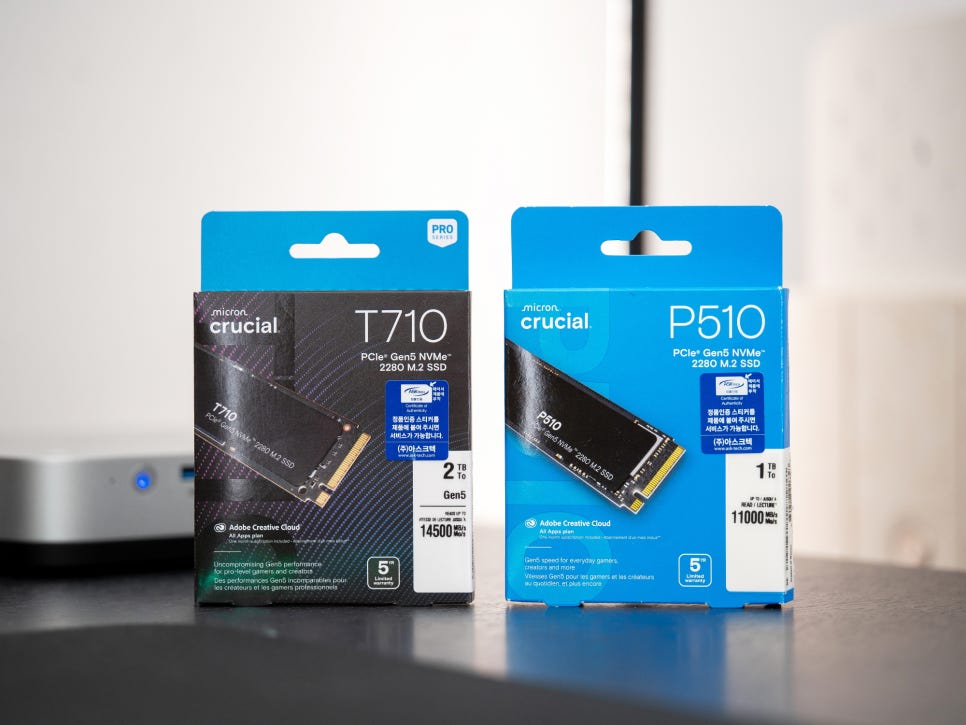
Following the introduction of the mainstream P510, Micron has now launched the flagship product T710, equipped with DRAM. Let’s delve into the features and actual performance of Micron’s new high-performance SSD T710 in this review.
Specifications and Configuration
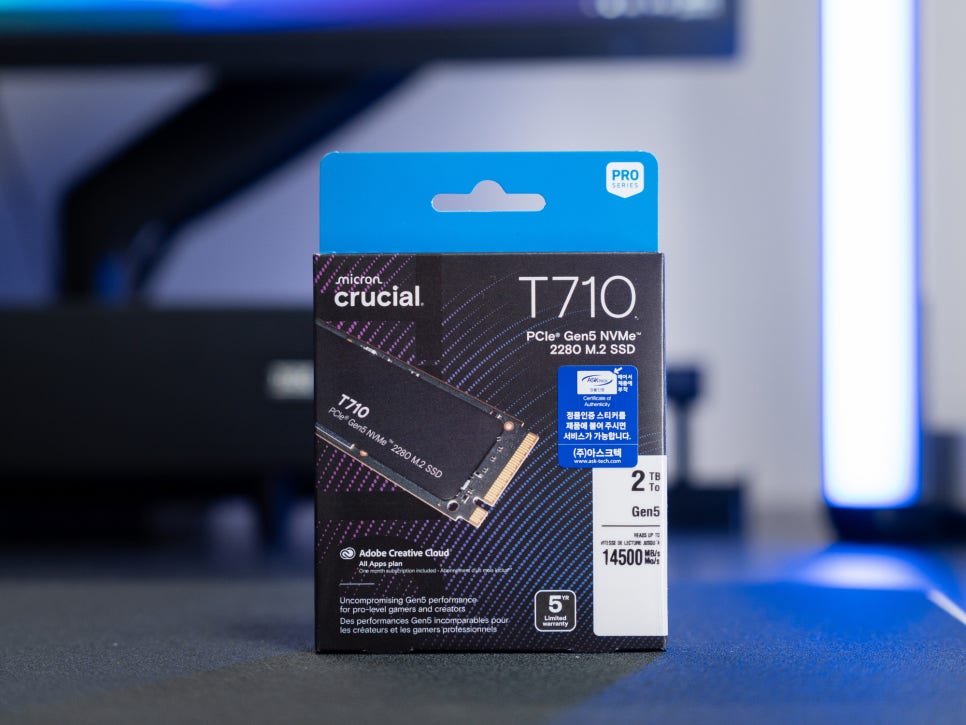
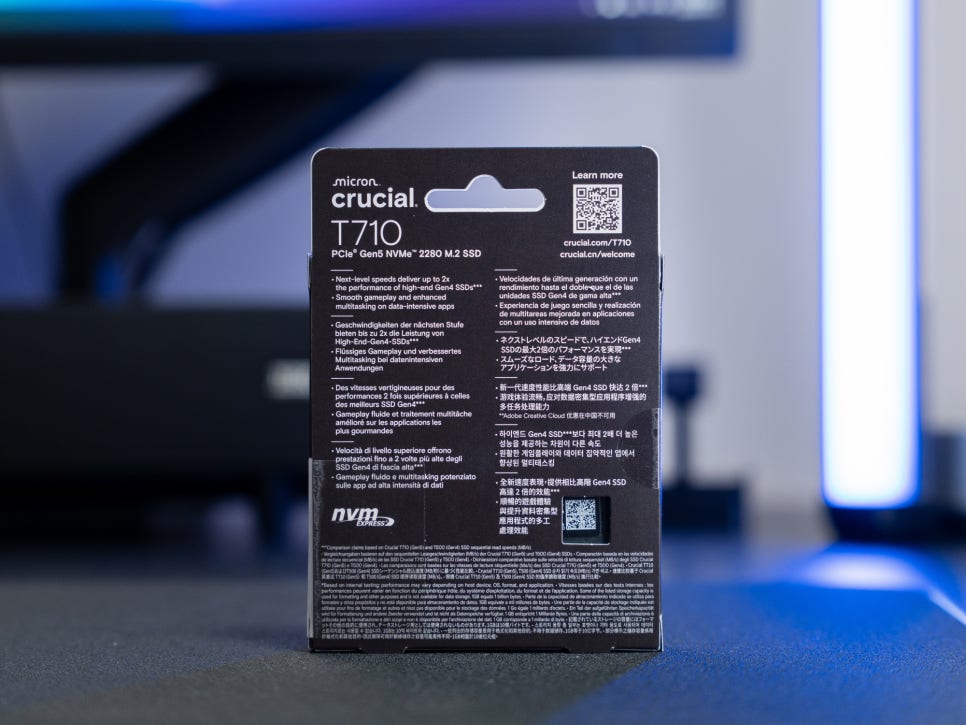
Specifications and Configuration
Interface: PCIe Gen5 x4, NVMe 2.0
Capacity: 1TB, 2TB, 4TB
NAND Memory: Micron G9 276-layer 3D TLC NAND
Controller: Silicon Motion SM2508 (6nm process)
DRAM: 2GB LPDDR4-4266
Sequential Read/Write: Up to 14,500MB/s / 13,800MB/s
Random Read/Write: Up to 2.2M / 2.3M IOPS
Endurance (TBW): 1,200TB (for 2TB model)
Warranty: 5-year limited warranty
Distributor: AskTech Co., Ltd.
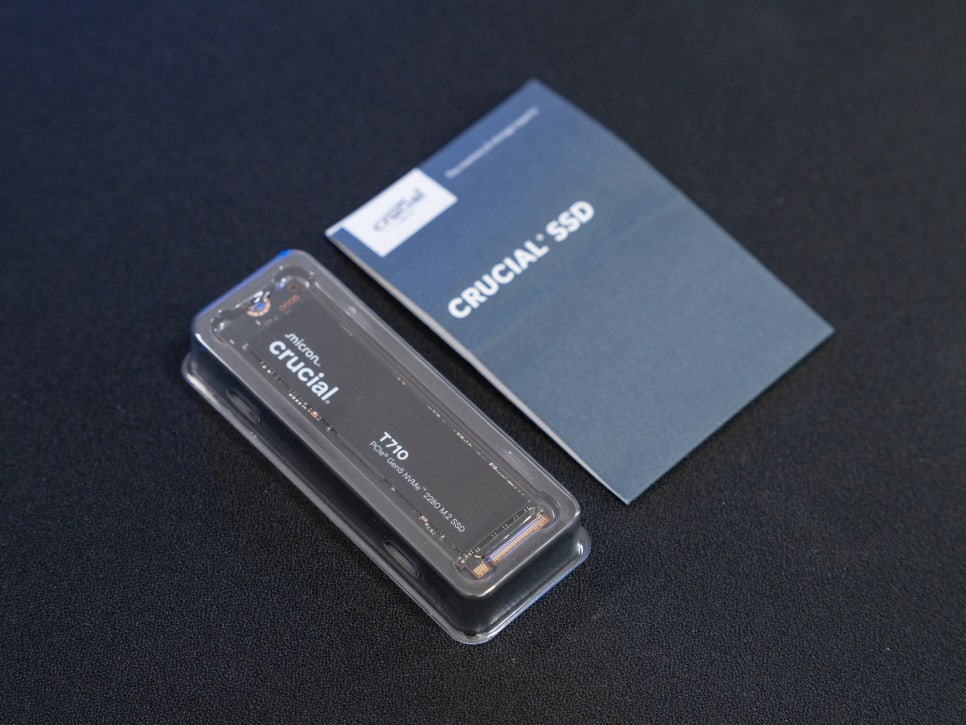
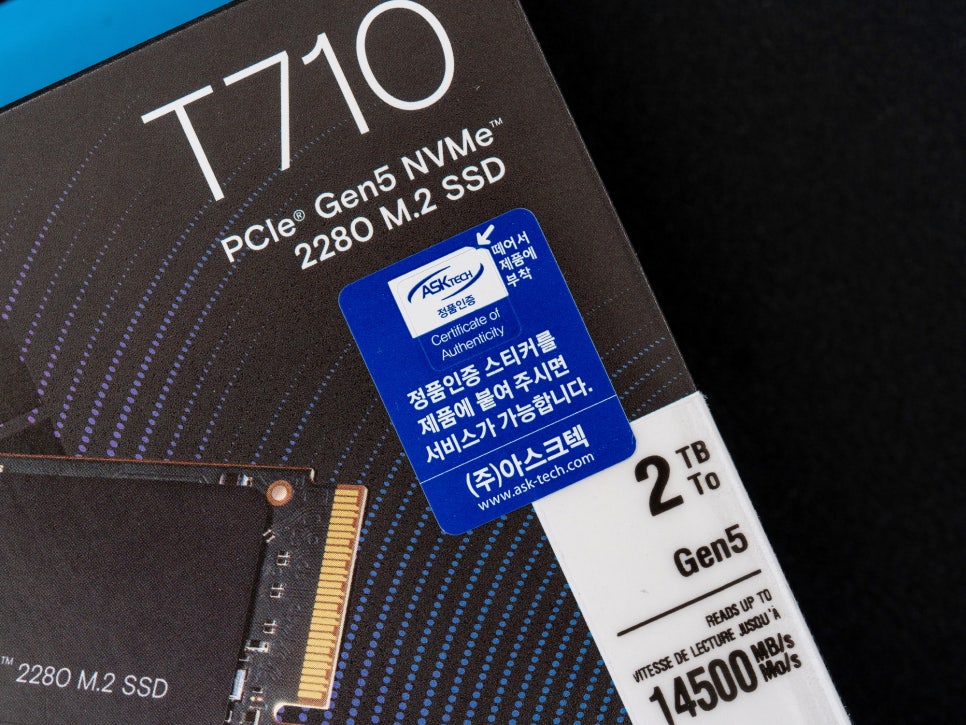
The packaging follows Micron’s typical design, featuring a clean composition with blue and black as the main colors. The front of the box clearly displays the product’s key specifications and capacity, making it easy to verify at the time of purchase. The package includes the SSD itself and a simple manual, with a version that includes a heatsink also available for sale.
Appearance and Features
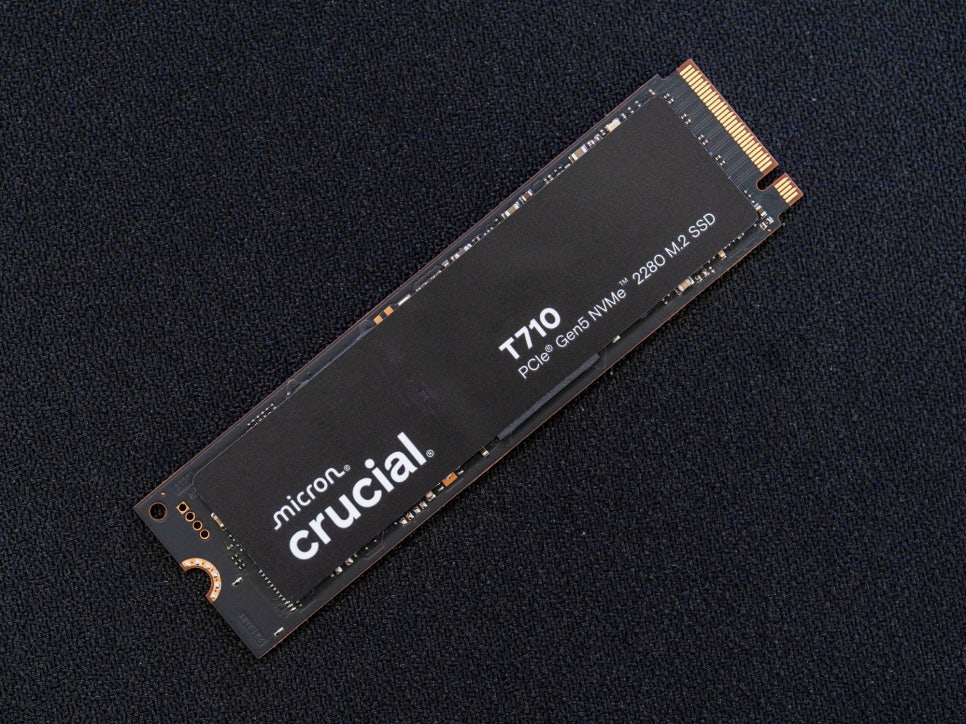
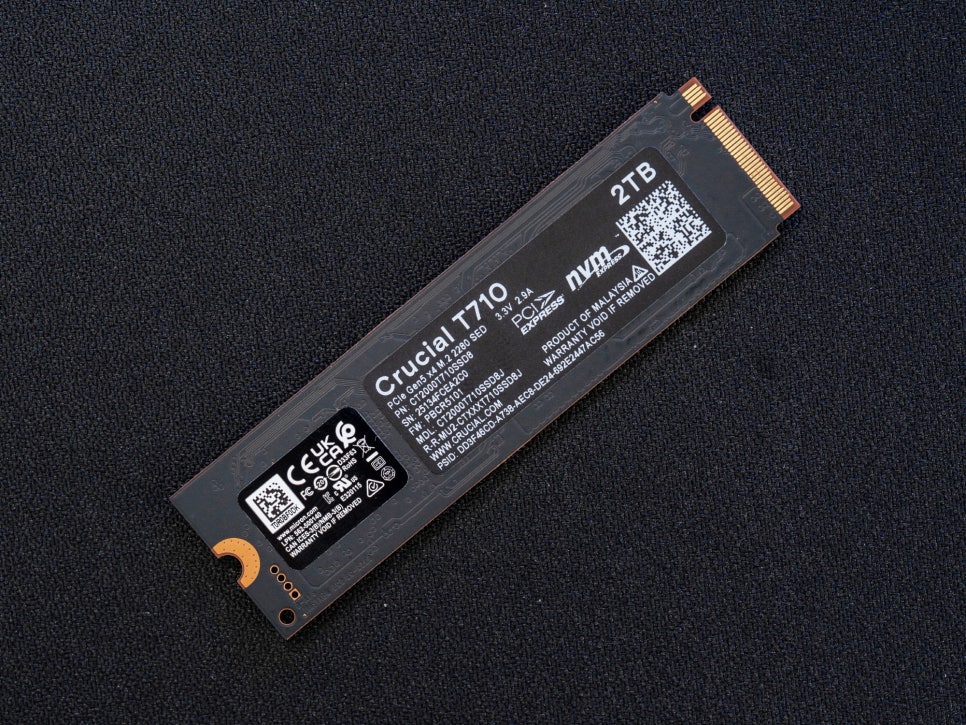
The T710 adopts the standard M.2 2280 form factor. Unlike the previous T705, it features a single-sided design across all capacities, making it suitable for use in laptops, mini PCs, and consoles. The silver controller and NAND chips are neatly arranged on the black PCB, with only a product certification sticker on the back.
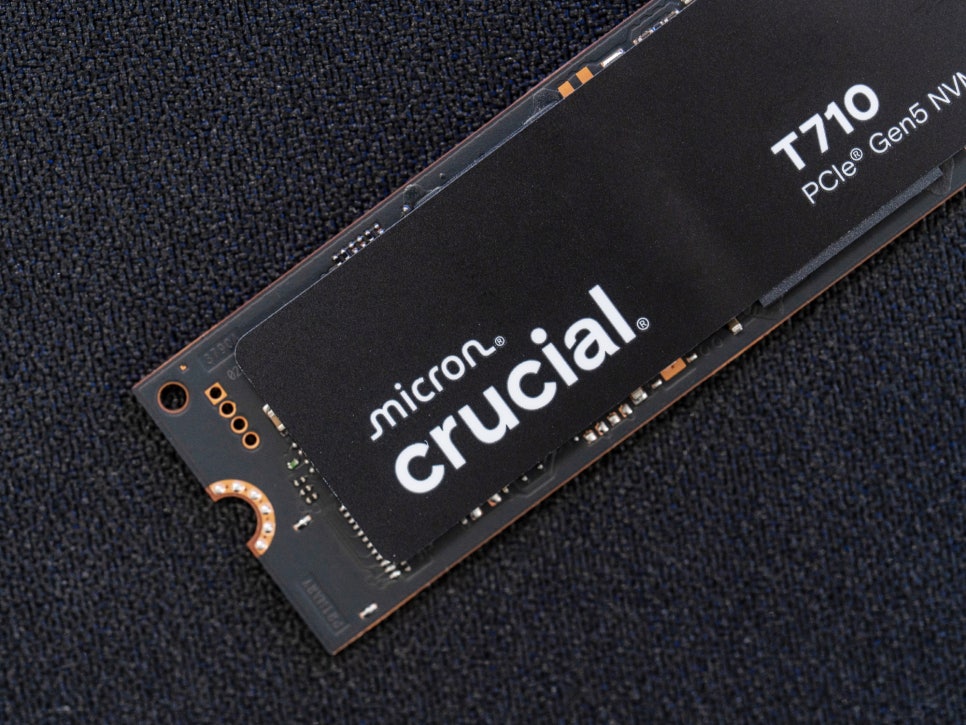
The T710 is based on the PCIe Gen5 NVMe interface but offers full backward compatibility with PCIe 4.0 and lower systems.
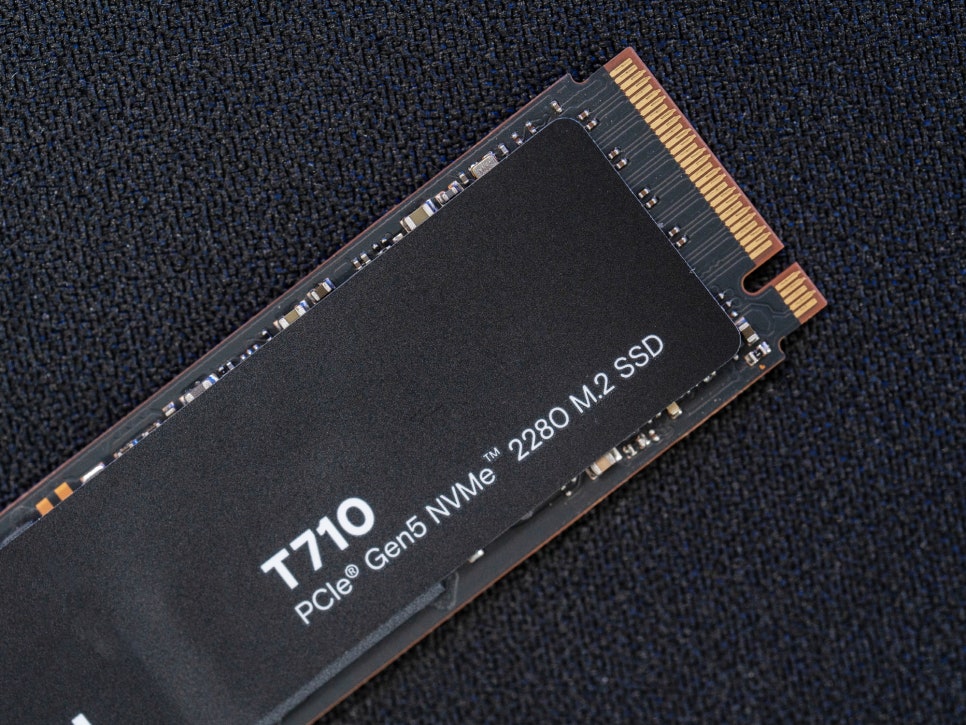
According to the official performance chart, the 2TB model offers an impressive sequential read speed of 14,500MB/s and a write speed of 13,800MB/s. This represents a 9% improvement in sequential write speed compared to the previous T705, placing it among the top performers in PCIe 5.0 SSDs. Additionally, it boasts top-tier random performance with 2.2M IOPS for random reads and 2.3M IOPS for random writes. Random read speed is a crucial metric that directly impacts perceived performance in everyday computing tasks like system booting, program execution, and game loading. The T710 shows a 28% improvement in random reads and a 42% improvement in random writes compared to the previous generation.
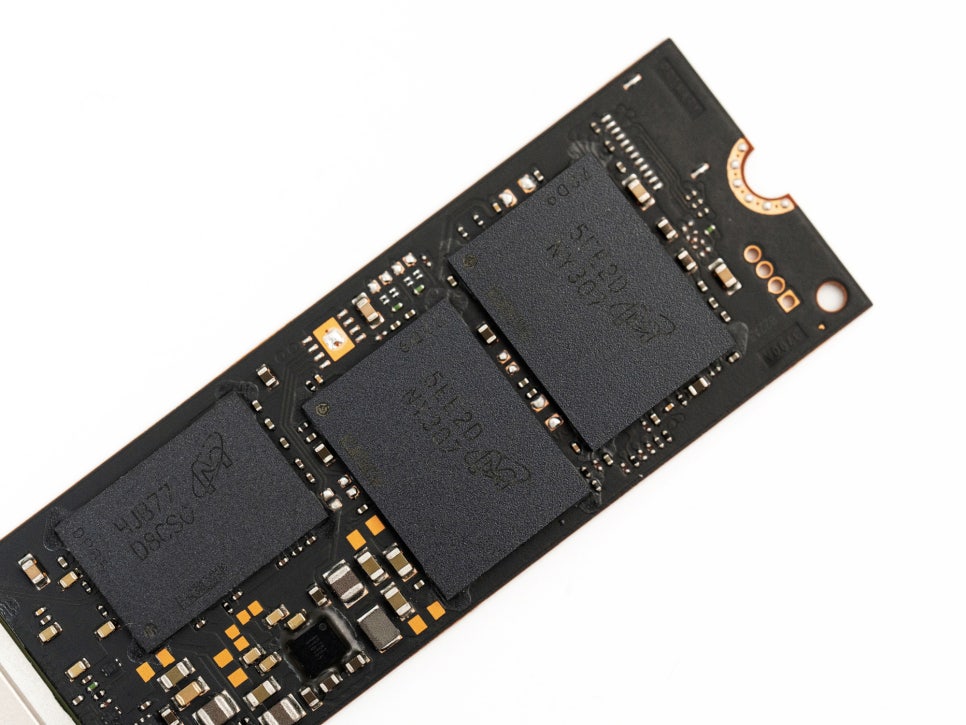
The T710 is equipped with Micron’s latest G9 276-layer 3D TLC NAND, supporting an interface speed of 3.6GT/s, which is a 50% improvement over the previous generation, and the package size has been reduced by 28%.
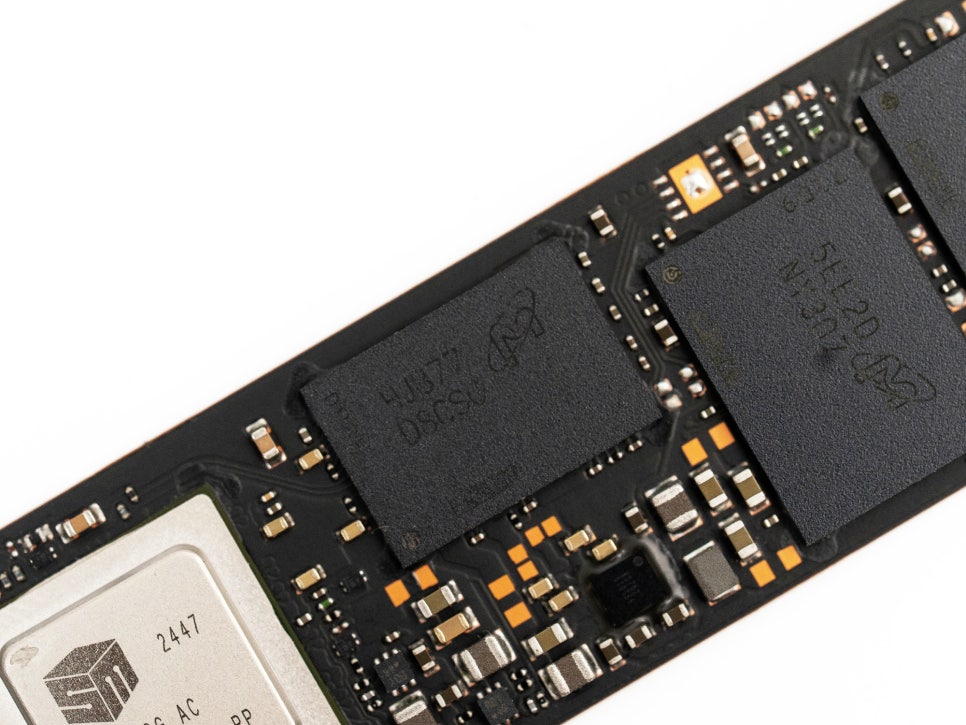
The Micron Crucial T710 2TB comes with 2GB of LPDDR4-4266 DRAM. This DRAM cache stores frequently accessed data, reducing the number of accesses to the NAND flash and improving response times, thus providing more stable and consistent performance.
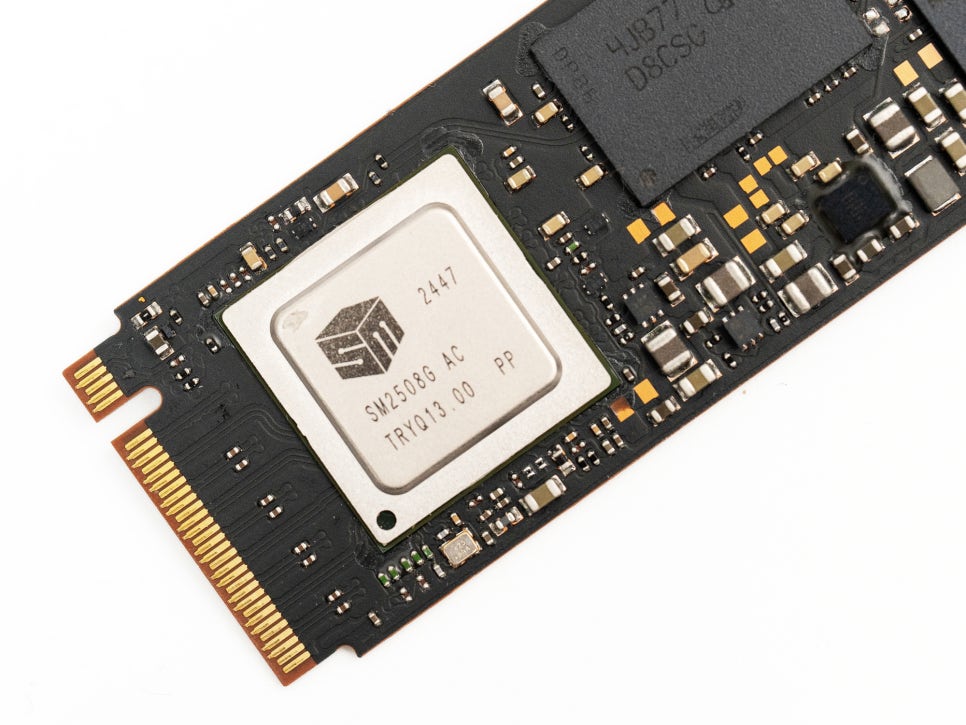
The controller is the Silicon Motion SM2508, manufactured using a 6nm process. Comprising four ARM Cortex-R8 cores and one Cortex-M0 core, this controller offers significant advantages in power efficiency and heat management compared to the Phison E26 used in the previous T705.
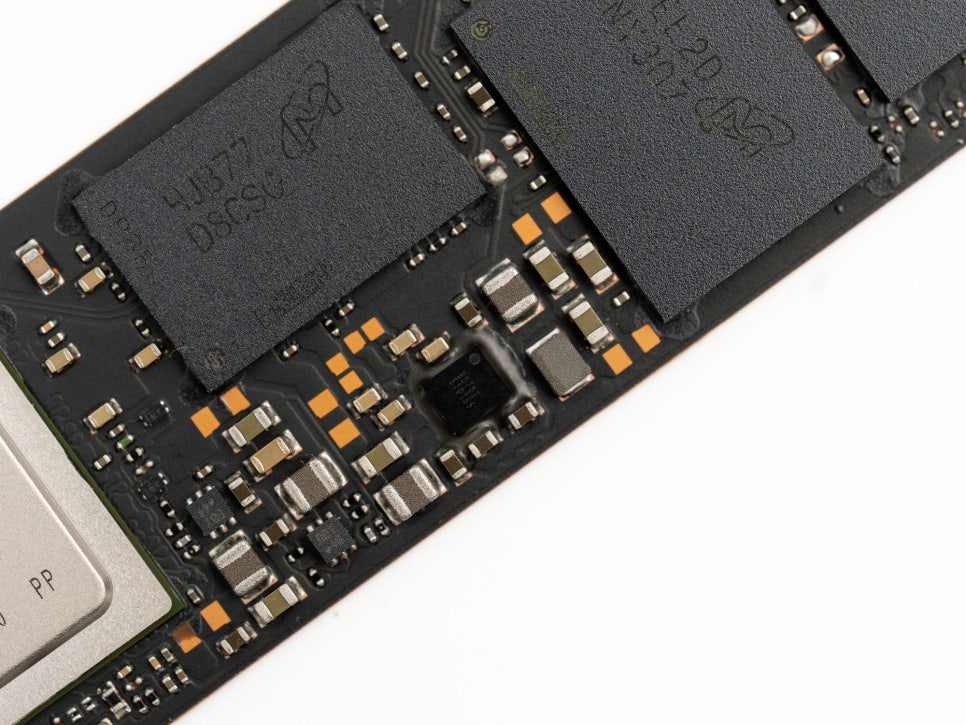
The Micron Crucial T710 minimizes system bottlenecks in high-load situations such as open-world streaming, real-time ray tracing, and large-scale AI model calls in AAA games through Microsoft DirectStorage API optimization. It can quickly cache and edit 8K RAW videos or large design files, providing satisfactory performance not only for gaming but also for creators specializing in video/photo editing.
Performance Test
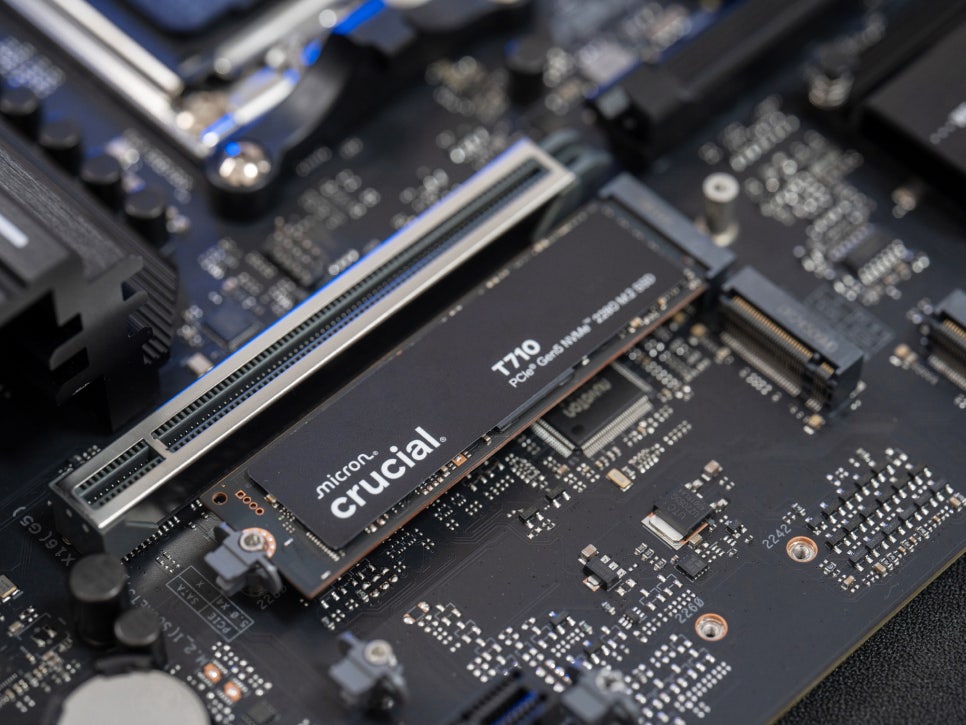
For this test, we configured the following high-end system:
System Specifications
CPU: AMD Ryzen 7 9800X3D
Motherboard: ASUS TUF Gaming B850M-Plus WiFi
Graphics Card: NVIDIA GeForce RTX 5070
Memory: ESSENCORE KLEVV DDR5-6400 CL32D URBANE V RGB 32GB
CrystalDiskMark
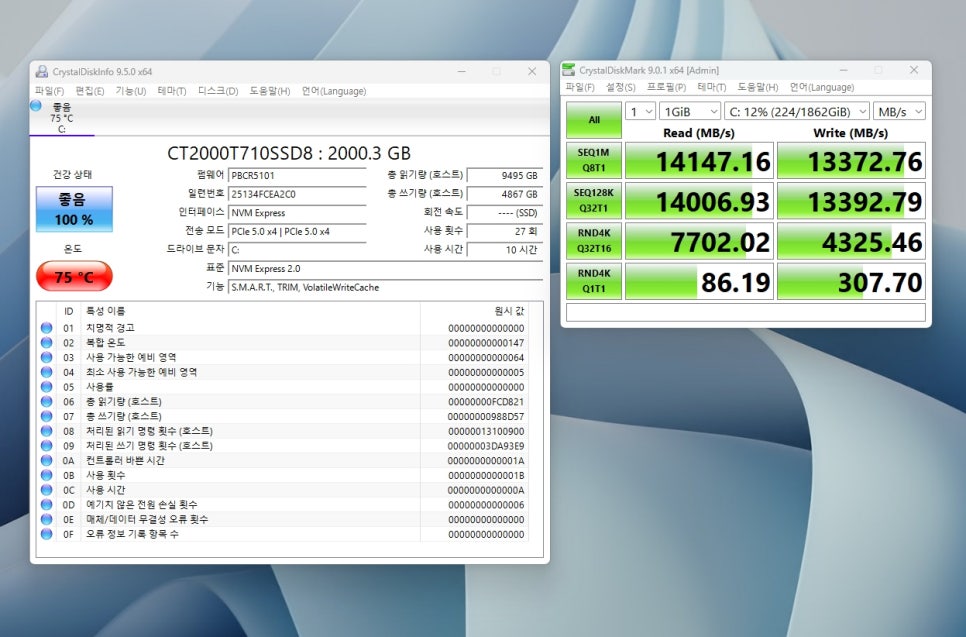
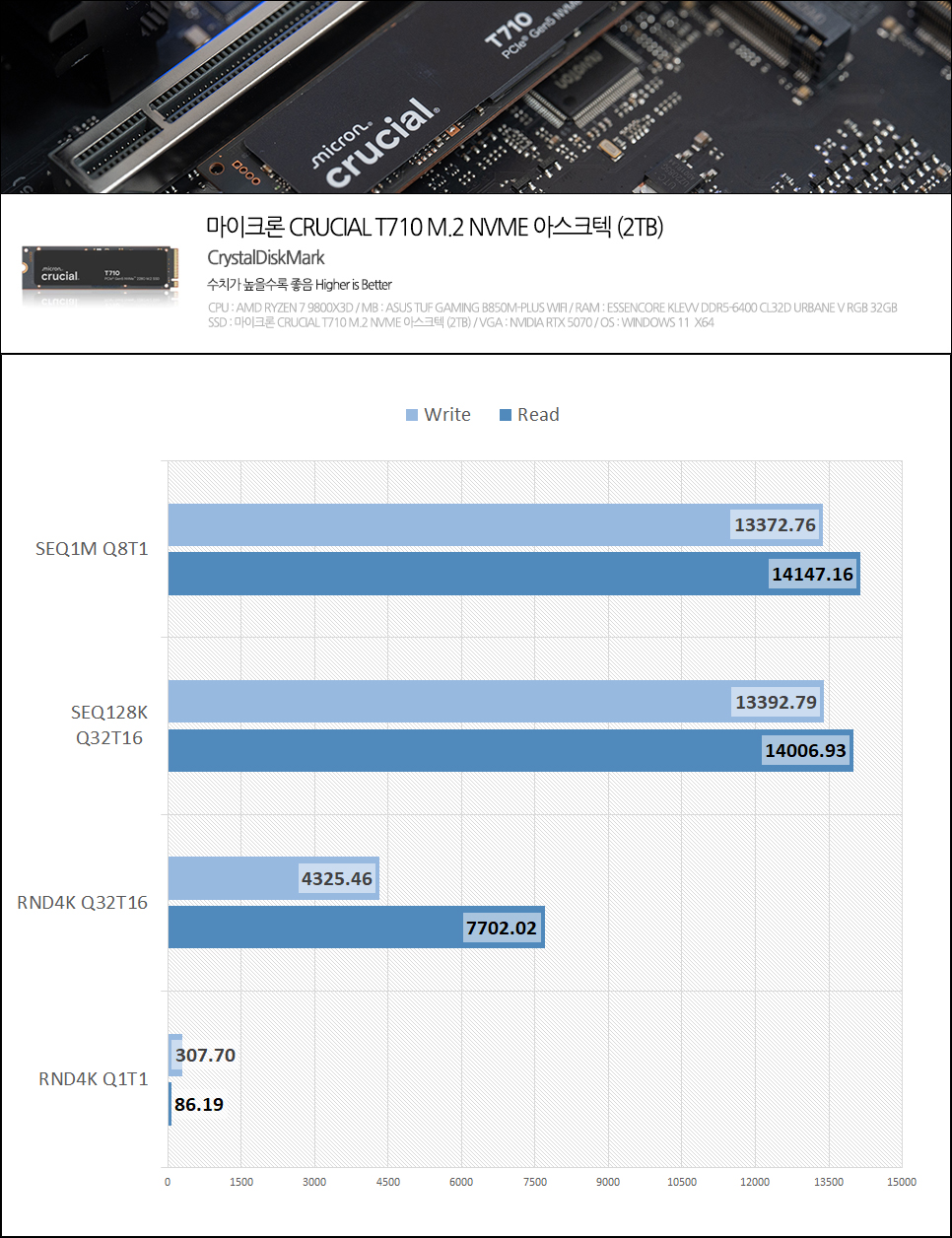
CrystalDiskMark is a representative benchmark tool for measuring the sequential and random performance of SSDs. The T710 recorded 14,147MB/s in sequential reads and 13,372MB/s in sequential writes. Although slightly lower than the official specifications, the results are satisfactory in the actual test environment. Particularly, the RND4K Q1T1 speed, closely related to boot times, program execution speed, and file explorer response speed, showed results of 86.19MB/s for reads and 307.70MB/s for writes, indicating excellent perceived performance in general usage environments.
AS SSD Benchmark


AS SSD Benchmark measures performance under conditions similar to actual usage. The T710 recorded a read score of 5,614 and a write score of 7,228, with an impressive total score of 15,750.

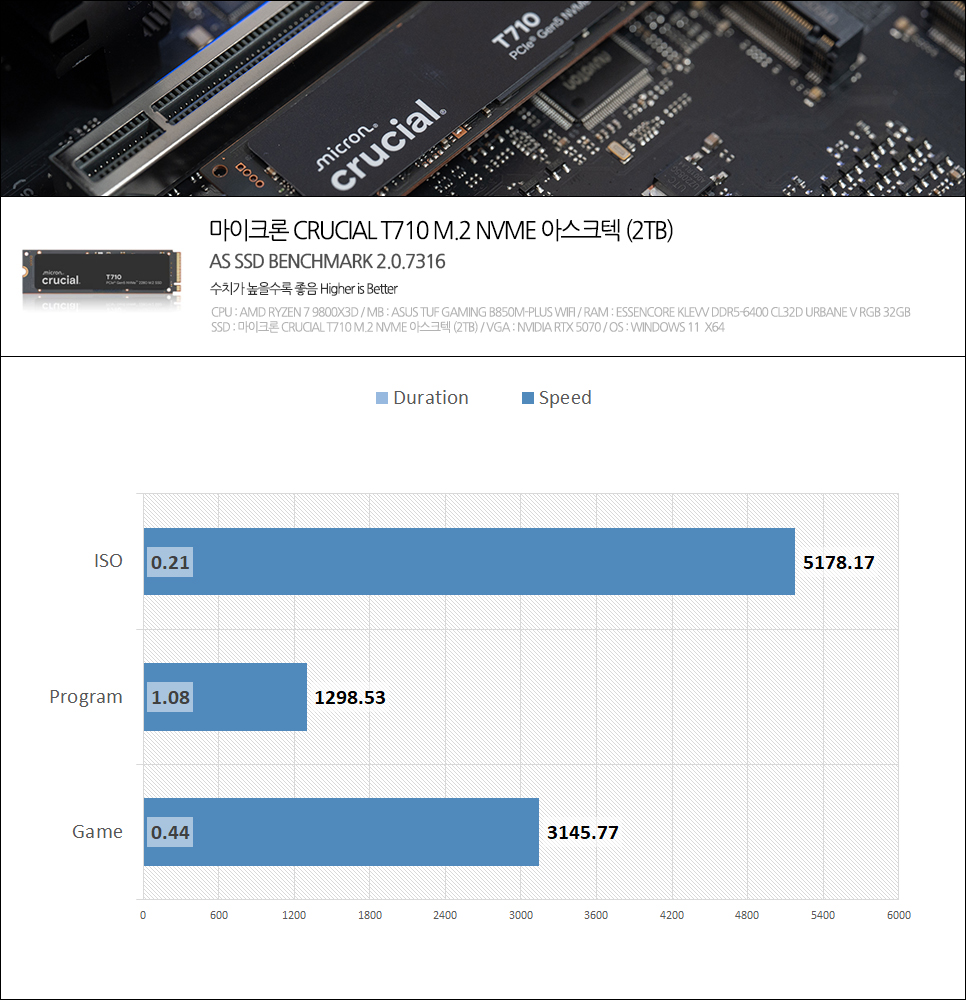
In the AS SSD Copy-Benchmark, which simulates real file copy scenarios, the T710 recorded 5,178.17MB/s for ISO file copies, 1,298.53MB/s for program file copies, and 3,145.77MB/s for game file copies, showing exceptional performance in handling large files.

In tests measuring performance changes according to compression rates, the T710 maintained consistent performance regardless of compression rate. This is attributed to the combination of a high-quality controller and NAND.
AJA System Test


In the AJA System Test, used in professional video editing fields, the T710 demonstrated excellent performance. It maintained stable performance even when processing 8K ProRes RAW files, meeting the demands of professional creators.
3DMark Storage Benchmark


In the 3DMark storage benchmark, which measures gaming performance, the T710 scored 3,753 points. This performance ranks it among the top for gaming SSDs, ensuring fast loading and smooth streaming of large games.
3DMark DirectStorage Test





In tests measuring Microsoft DirectStorage performance, the T710 recorded an impressive performance index of 240.0%. It quickly loads texture rendering when running large AAA games in conjunction with the DirectStorage API, providing a stutter-free gaming environment even in large game settings. As more game titles utilize DirectStorage in the future, the T710’s performance can be fully experienced.
Dummy File Creator Test




In the Dummy File Creator test, which measures large file write performance, the T710 recorded 1.94 seconds for creating a 10GB file, 19.9 seconds for a 100GB file, and 113.43 seconds for a 500GB file. Compared to the previously reviewed P510, there is a significant difference. While the P510 recorded 1.94 seconds for 10GB, 45.47 seconds for 100GB, and 323.12 seconds for 500GB, the T710 shows more than double the performance improvement, especially in handling large files. This improvement is analyzed as the synergy effect of the 2GB DRAM cache, high-performance Silicon Motion SM2508 controller, and Micron G9 NAND.
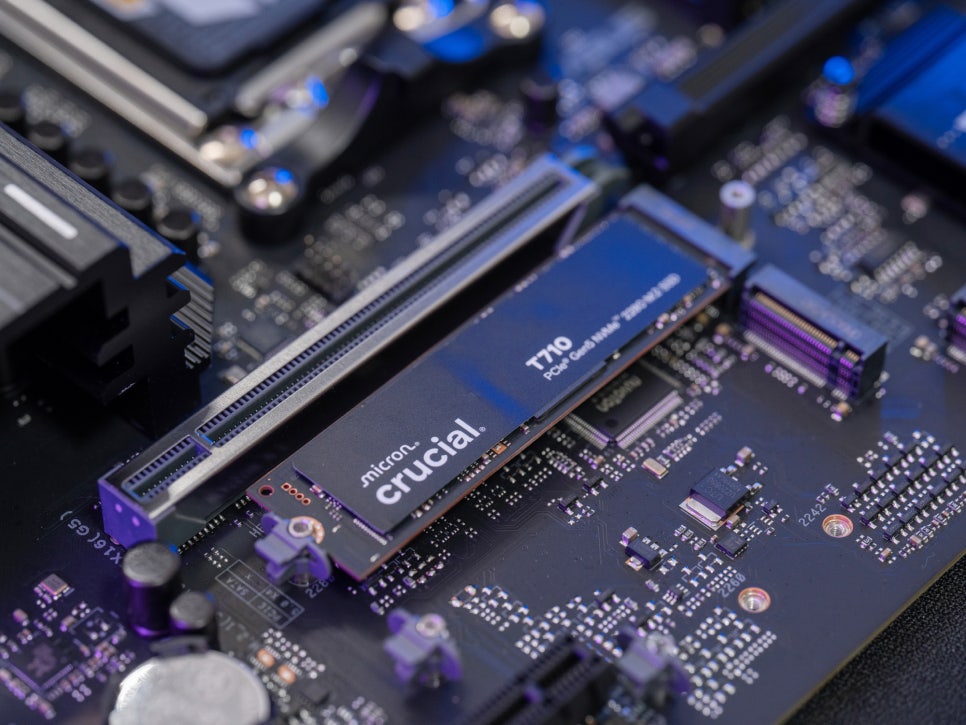
Naraeon Dirty Test

In the dirty test, which measures performance degradation during prolonged SSD use, the T710 maintained over 90% of its initial performance even at 80% capacity usage. During the approximately 10-minute test, the maximum temperature recorded was 71 degrees, with an average temperature of 65 degrees. This temperature was achieved using the default heatsink provided with the B850 board, and the reduced power consumption by 24% and improved heat management seem to effectively suppress temperature rise.
Software
Micron offers two specialized software programs for Crucial SSD users for free.
Crucial Storage Executive
This is the official SSD management software provided by Micron, offering comprehensive management functions such as drive status monitoring, performance optimization, firmware updates, and security settings.

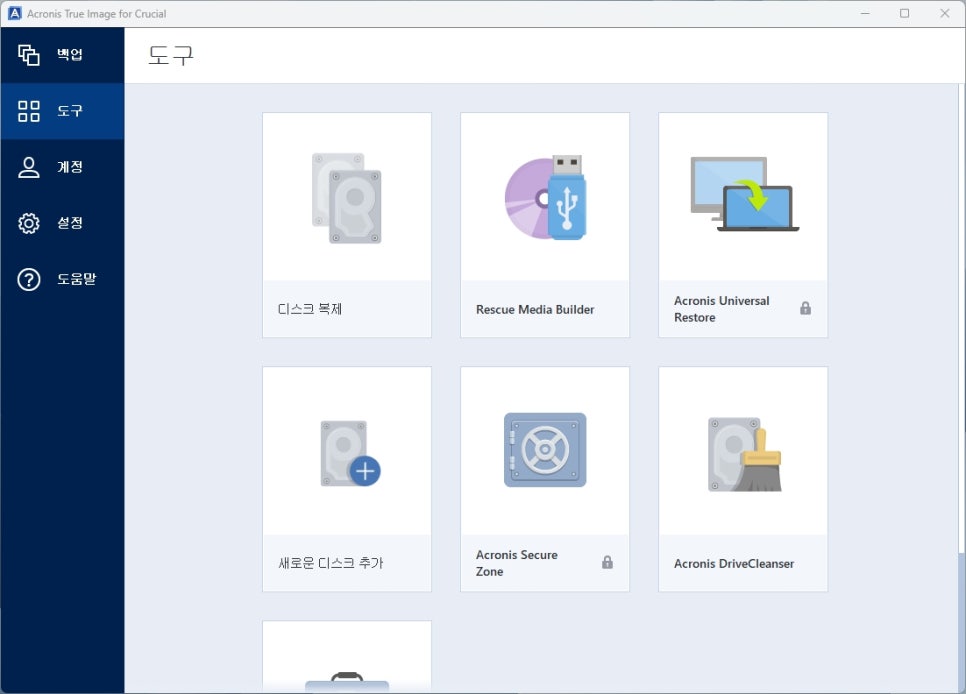
Acronis True Image for Crucial
This is professional backup and cloning software provided free with the purchase of Crucial SSDs. It allows you to perfectly clone your existing drive to a new SSD or backup your entire system.
In Conclusion

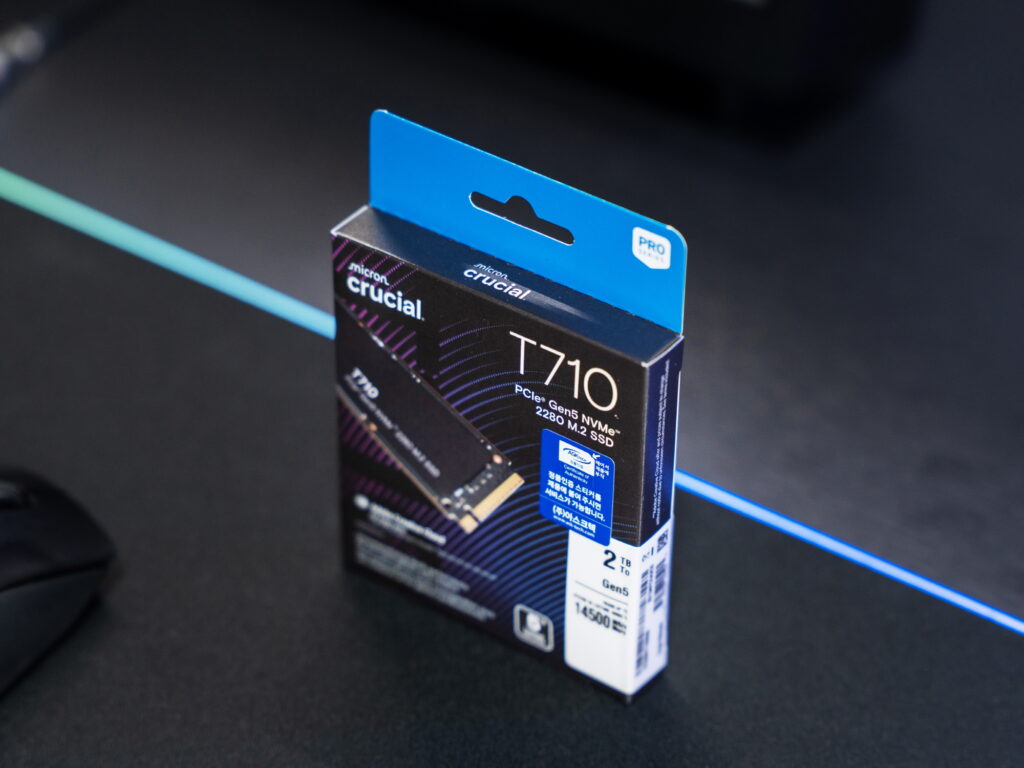
The Micron Crucial T710 2TB’s most notable feature is that it has resolved the heat and power consumption issues of the previous T705 while actually improving performance. The combination of the Silicon Motion SM2508 controller and Micron G9 NAND has shown excellent results not only in sequential performance but also in random performance.
Particularly noteworthy is the single-sided design that makes it compatible with laptops and mini PCs, along with 24% reduced power consumption and improved thermal characteristics that ensure stable performance across various system environments. The gaming performance improvements through DirectStorage optimization and large file processing capabilities for professional creators are arguably the T710’s most attractive features.
In terms of pricing, it maintains a reasonable level among PCIe 5.0 SSDs, and the 5-year warranty plus domestic A/S service through Asktech are also key purchasing points. If you’re considering a PCIe 5.0 SSD, the Micron Crucial T710 seems to be the best product that combines both performance and stability.
As an Amazon Associate I earn from qualifying purchases.
Purchase the Product : https://amzn.to/45imR0t
